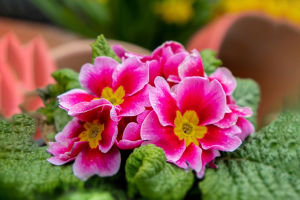In the realm of flowers, each bloom carries its own unique language, expressing sentiments, emotions, and meanings that transcend words.
Among these enchanting blossoms, the hyacinth stands out with its vibrant hues, delicate petals, and intoxicating fragrance.
Beyond its aesthetic appeal, the hyacinth holds a rich history of symbolism and significance, weaving tales of love, rebirth, and remembrance. Originating from the Mediterranean region and the Middle East, the hyacinth has long captivated cultures across the globe with its beauty and allure. In ancient Greek mythology, the hyacinth was associated with the tragic tale of Hyacinthus, a handsome youth loved by the sun god Apollo. According to legend, Hyacinthus was accidentally killed by Apollo during a discus-throwing contest, and from his blood sprang the stunning hyacinth flower. Thus, the hyacinth became a symbol of grief, mourning, and the fleeting nature of life.
Despite its association with sorrow, the hyacinth also carries connotations of rebirth and renewal. In Persian culture, the hyacinth symbolizes spring and the Persian New Year, known as Nowruz. During this celebration, hyacinth bulbs are planted in pots and displayed in homes as a symbol of new beginnings and the promise of a prosperous year ahead. This tradition underscores the hyacinth's role as a harbinger of spring, heralding the arrival of warmer weather, blooming flowers, and the rejuvenation of nature.
In the language of flowers, known as floriography, hyacinths convey a variety of sentiments depending on their color. Purple hyacinths, with their deep, regal hue, represent sorrow and apology, making them a fitting choice for expressing condolences or seeking forgiveness. Blue hyacinths, reminiscent of the azure sky and tranquil waters, symbolize serenity, calmness, and peace, making them ideal for conveying messages of tranquility and relaxation. White hyacinths, with their pure and pristine petals, carry associations of innocence, purity, and spiritual enlightenment. They are often used in weddings and ceremonies to symbolize the sacred bond of marriage and the divine presence of the soul. Pink hyacinths, with their soft and delicate hue, exude feelings of affection, admiration, and gratitude, making them a heartfelt gesture of appreciation and love.
In addition to their symbolic meanings, hyacinths are also prized for their intoxicating fragrance, which evokes memories of springtime and blooming gardens. The sweet, heady scent of hyacinths has inspired poets, artists, and gardeners alike, serving as a source of inspiration and delight. Whether used in floral arrangements, perfumes, or potpourri, the aroma of hyacinths brings a touch of elegance and sophistication to any space.
The hyacinth's flower language is as complex and nuanced as its beauty. From its origins in ancient mythology to its modern-day significance in cultural celebrations and traditions, the hyacinth continues to captivate hearts and minds with its timeless charm. Whether as a symbol of grief, renewal, or affection, the hyacinth reminds us of the profound connections between nature, emotion, and the human experience.
In traditional medicine, hyacinth extracts were believed to have medicinal properties, used to treat various ailments such as coughs, colds, and respiratory issues. Hyacinth essential oils are prized in aromatherapy for their calming and soothing effects on the mind and body. Beyond their therapeutic properties, hyacinths also play a vital role in gardening and landscaping, adding bursts of color and fragrance to outdoor spaces.


